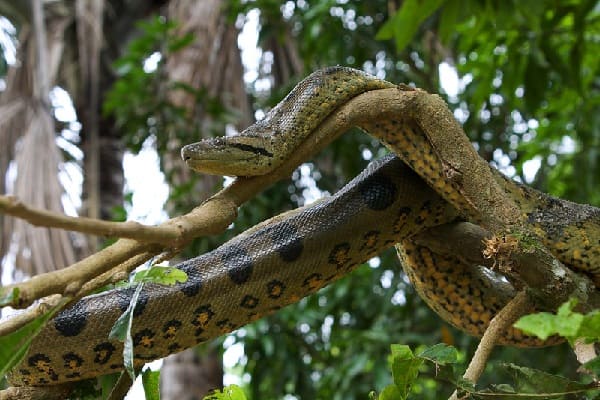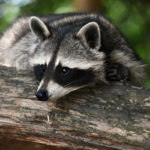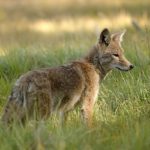Snakes have been living on our planet for millions of years and are an important part of the ecosystem. They have adapted to a variety of habitats, from arid deserts to humid rainforests, each providing them with unique opportunities for survival. Most snakes live on the ground, but some snake species, such as sea snakes and pit vipers, have adapted to living in the water or in the deserts, respectively.
Some venomous snakes, like rattlesnakes and cobras, have adapted to living in dry and hot climates, whereas most nonvenomous snakes live in moisture-rich environments. This apex reptile predator prowls through the desert of rock and sand or scavenges through the forest soil gliding through leaf and insect, blending seamlessly into the grass and underbrush. This article will give a glimpse into how different species of snakes live and what a snake habitat would likely look like.

Where do snakes live?
Different snake species live on different continents and in different habitats. For example, a green anaconda can be found in the forests of South America, while a king cobra can be found across Asia and Africa. Snakes that live in forests tend to have more cover with a tree, leaves, logs, and other objects; they also benefit from the abundance of prey animals like rodents, lizards, and insects.
A few species of snakes prefer warmer climates and humid environments, which is why they are often found in swamps, wetlands, or grasslands in different parts of the world. Snakes living in desert habitats have adapted to the harsh conditions by becoming smaller in size and having a lighter coloration that helps them blend into their environment. Sea snakes can also be found living underwater in coral reefs, estuaries, and coastal waters, where they have a steady diet of fish and other marine animals.

Adapting to the Environment
Snakes have developed various adaptations to help them survive in their specific habitats. For example, arboreal snakes, which live in trees, have developed prehensile tails to help them grip branches. This adaptation is crucial for navigating the treetops in search of prey or to escape predators. In contrast, fossorial snakes, which live underground, have more streamlined bodies and reduced eyesight, as they spend most of their time burrowing through the soil.
Similarly, aquatic snakes have developed specialized scales on their belly that allow them to move smoothly through the water, while snakes that live in dry, sandy environments, such as the Sidewinder, have developed a unique form of locomotion that allows them to move across the sand without sinking.
Feeding Habits of Snakes
The diet of a snake varies based on its habitat and size. Smaller snakes, such as garter snakes, typically eat insects, frogs, and small rodents. Larger snakes, like pythons and anacondas, can consume larger prey such as deer, pigs, and even alligators. Some snake species, like the King Cobra, specialize in eating other snakes.
Most snakes are carnivorous and consume their prey whole. They have flexible jaws that can stretch wide to swallow prey much larger than their head. Some species of snakes, like the Boa Constrictor, will constrict their prey until it suffocates before consuming it, while others, like the Viper, use venom to immobilize their prey.

Importance of Snakes in the Ecosystem
Despite the fear they often instill in people, snakes play a crucial role in maintaining the balance of the ecosystem. By controlling the populations of rodents and other pests, snakes help to reduce the spread of diseases that these animals can carry. Moreover, snakes themselves are prey for larger predators such as birds of prey, foxes, and large carnivorous mammals, thus contributing to the food chain.
Moreover, snakes play a vital role in seed dispersal, which is crucial for the regeneration of forests. Some snakes consume fruits along with their regular diet, and the seeds of these fruits are later excreted in different areas, helping in the dispersion of plant species.
Human Interaction and Conservation
Human activities such as deforestation, urbanization, and agriculture have led to the loss of habitat for many snake species. Additionally, snakes are often killed due to fear or for their skin, which is used in the fashion industry. This has led to a decline in snake populations in many parts of the world.
Conservation efforts are being made to protect snake habitats and to educate people about the importance of snakes in the ecosystem. Protected areas and reserves have been established in different parts of the world to conserve snake populations and their habitats. Additionally, many organizations are working on educating the public about snakes and promoting snake conservation.
Need Help With Snakes On Your Property?
Need help removing snakes on your property but not sure where to start? Look no further than AAAC Wildlife Removal! We specialize in the humane removal of all wildlife species, including snakes and other reptiles. Our team of experts has the expertise and training to safely remove any snake from your property quickly and efficiently.
We understand that having a snake on your property can be concerning and stressful, so we are here to help. We provide customized removal plans tailored to your needs and will work with you step-by-step until the job is done. Contact AAAC Wildlife Removal today for all of your snake removal needs!
Conclusion
Snakes are cold blooded creatures with a wide range of habitats that vary from rainforests to deserts. Most poisonous snakes maintain a body temperature higher than the surrounding environment by seeking heat from the sun, while non-poisonous snakes rely on burrows, log, branch, vine, or other hiding places to maintain their body temperature. Although wild snakes can pose a threat and cause fear in humans, it is always important to remember that they play an important role and should be respected as such.
They are an important part of the ecosystem, playing a key role in controlling rodent populations and keeping ecological balance intact. While other snake species are important to their environment, if you find one on your property, it is best to contact a professional for removal.














